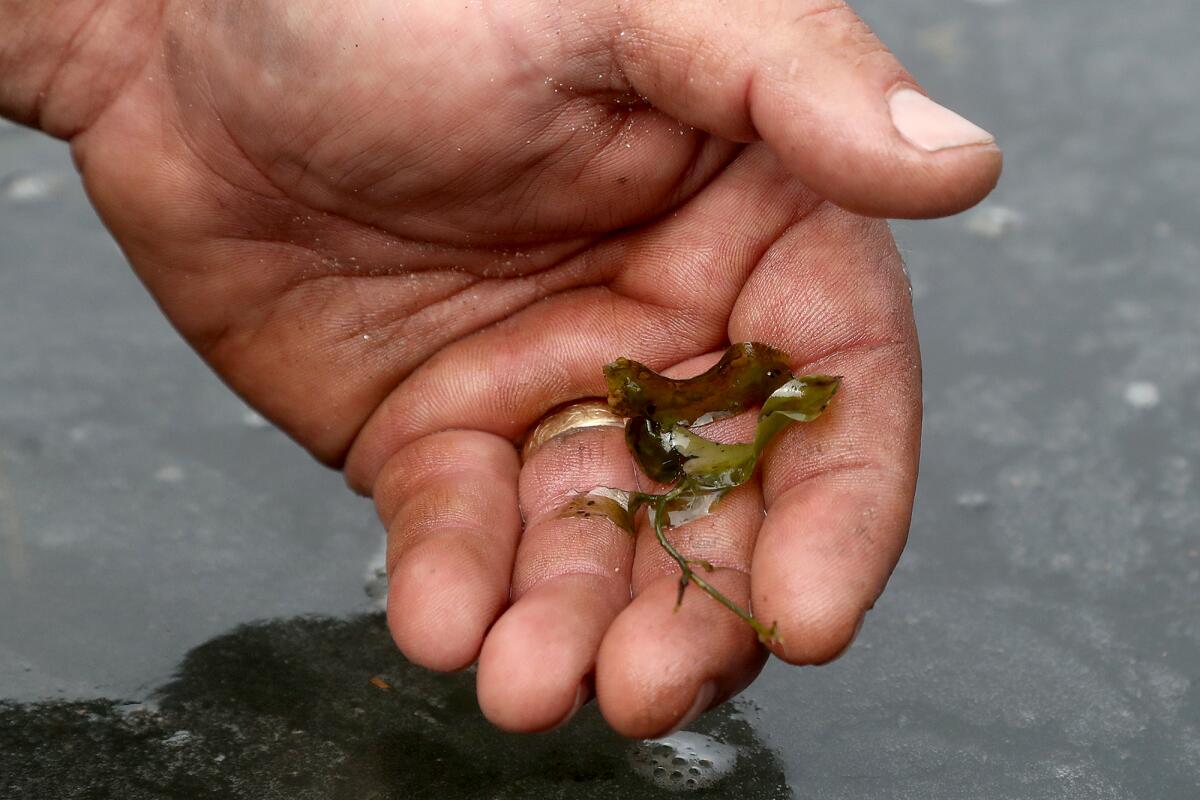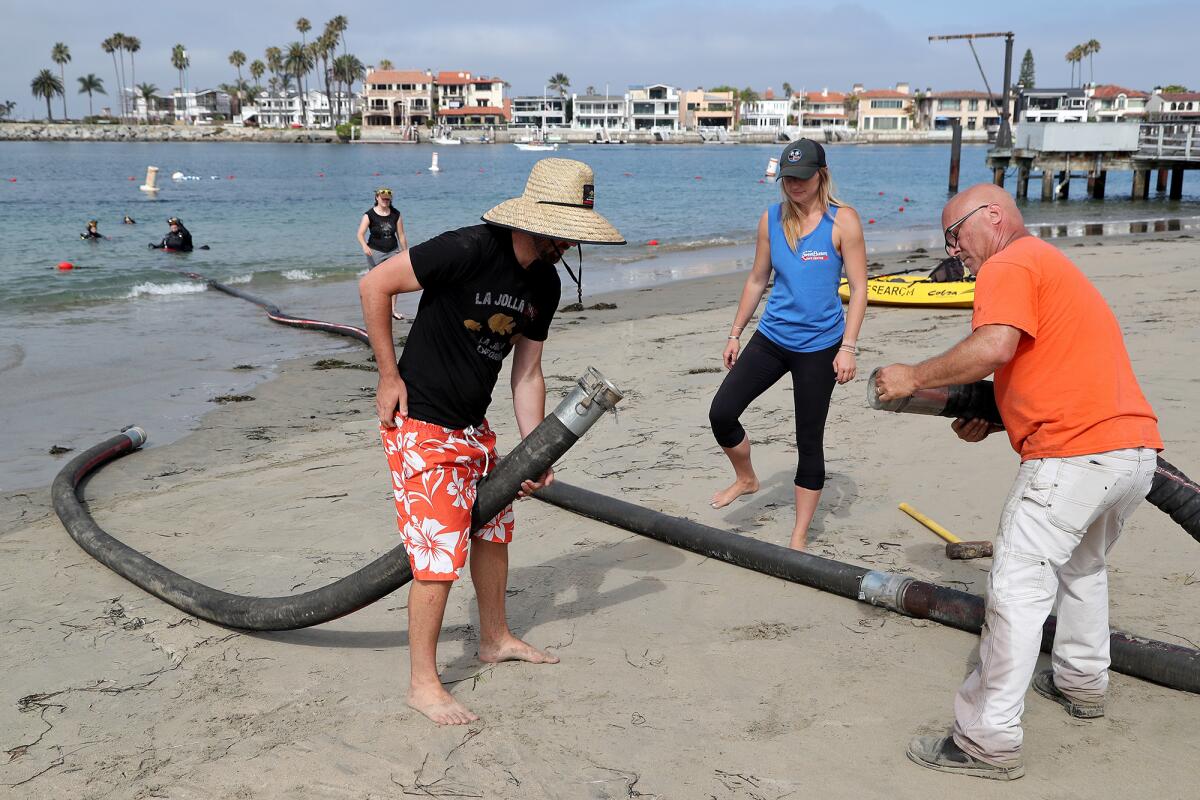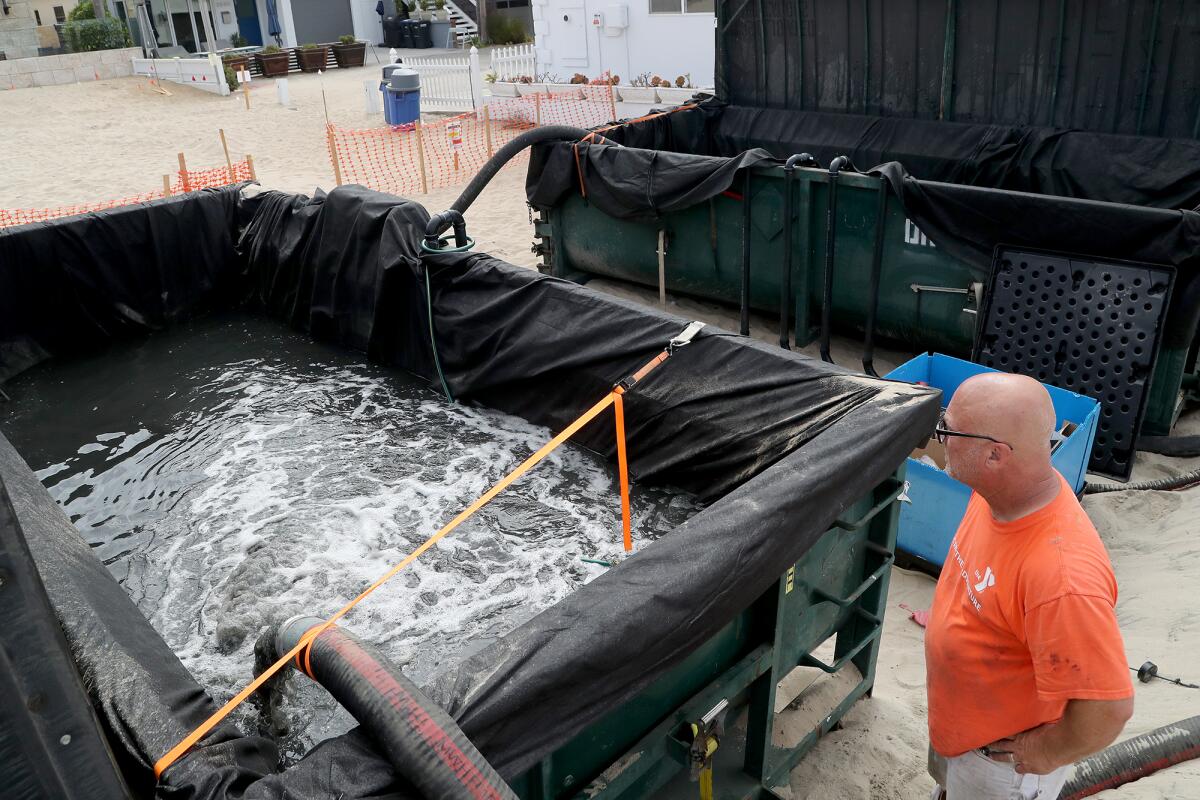Divers remove invasive algae from Newport Harbor

- Share via
Newport Harbor is saying goodbye to an invasive algae species that arrived in its waters earlier this year.
Divers set out from China Cove Beach on Wednesday morning to extract the plant from the seafloor using vacuum pumps. The algae collected is then brought onshore and placed in a container where it and other solids are filtered out of the water. Once the filtering process is complete, the water is discharged back into the harbor.
The algae, identified as Caulerpa prolifera, is a species native to Florida and other subtropical and tropical locales. It is not harmful to humans, but it is known to grow quickly and choke out native seaweeds, which could damage Newport Harbor’s ecosystem.
The algae is capable of recolonizing by fragmentation, according to Becky Ota, marine habitat conservation program manager, who told the Daily Pilot in April that means “even small little pieces are viable and can float off and become small plants elsewhere.”
It is also a common saltwater aquarium plant, but it like other aquarium plants and animals can become potentially invasive species if released into an environment it is not native to.

John Pope, a spokesman for the city, said it isn’t clear how the algae came into harbor waters.
It was discovered in Newport Harbor in March by a diver, who then reported the patch to the Orange County Department of Agriculture, which in turn reported it to the California Department of Fish and Wildlife after it was positively identified in April.
Clean-up is expected to take place over the next four to five days, but there are no expected closures unless more of the plant is discovered in other parts of the harbor and need to be removed.
Pope said there were concerns early on in discussions that the clean-up might impact the dredging project in Newport Harbor, but that is expected to continue as initially scheduled.
Following removal, divers will conduct surveys both in and around the harbor to check for any other signs of the algae. Efforts to remove the plant are being funded by the California State Water Resources Control Board. Surveys are being funded by the U.S. Fish and Wildlife Service and National Marine Fisheries Service.
The area is marked off by buoys and signs to keep away.

All the latest on Orange County from Orange County.
Get our free TimesOC newsletter.
You may occasionally receive promotional content from the Daily Pilot.




